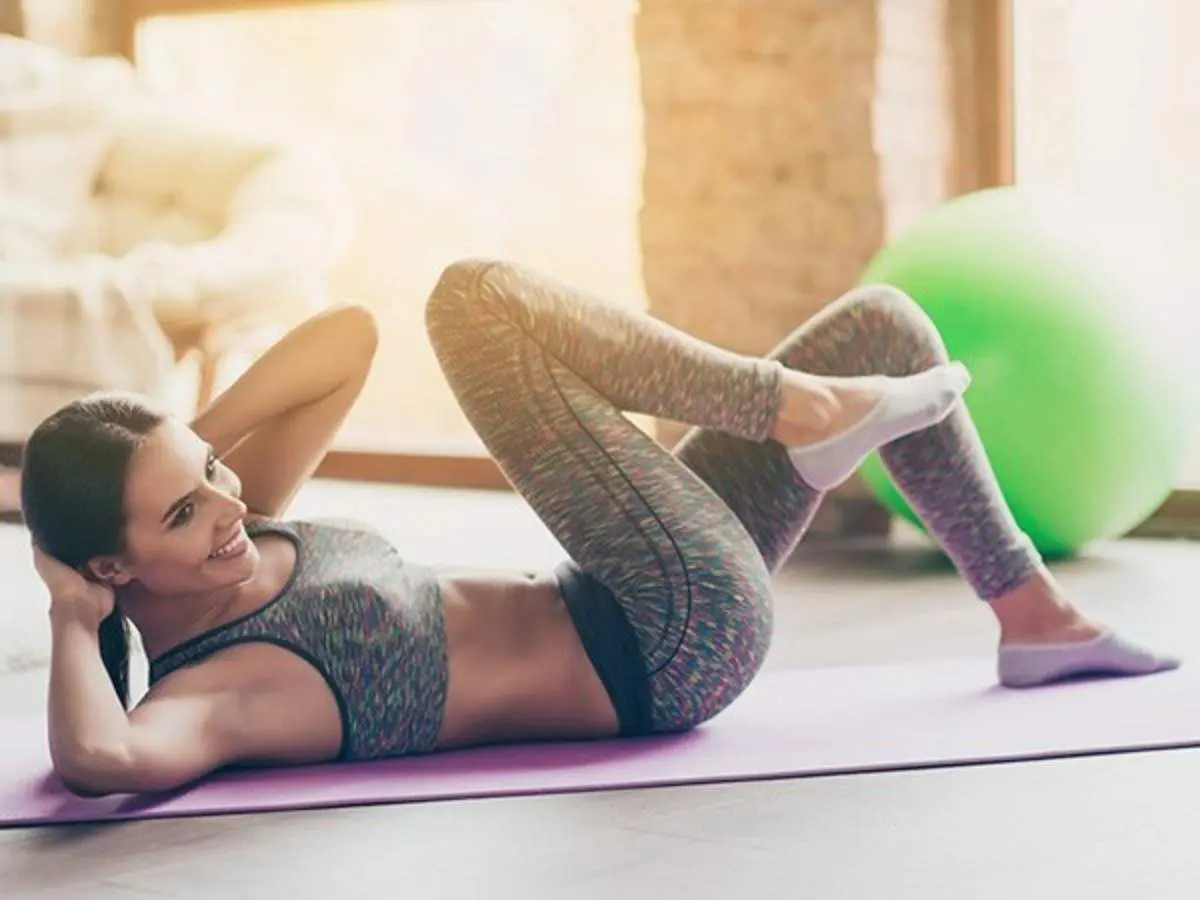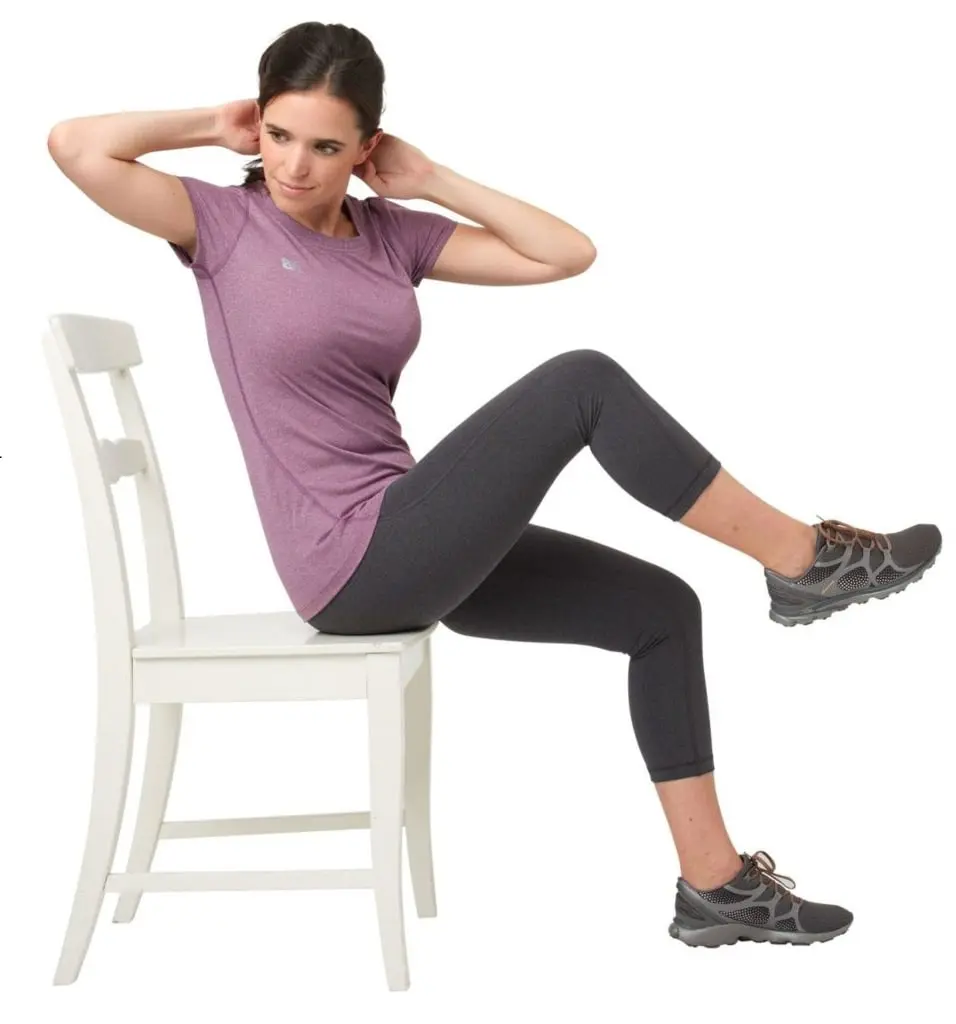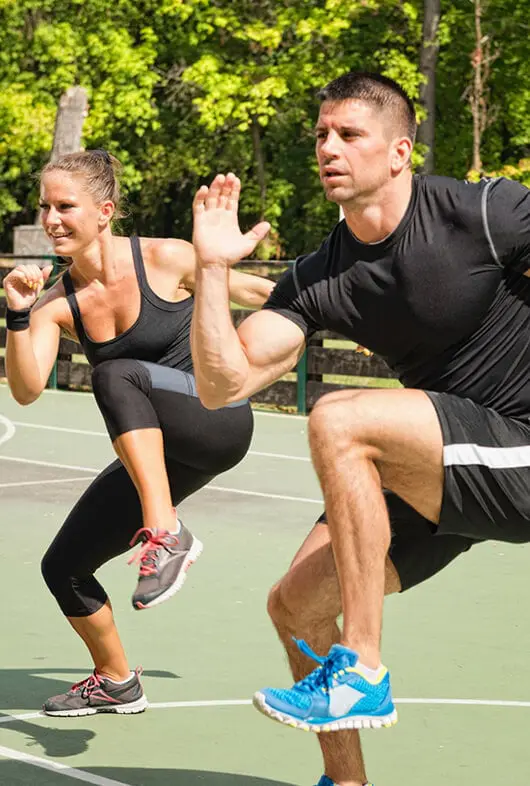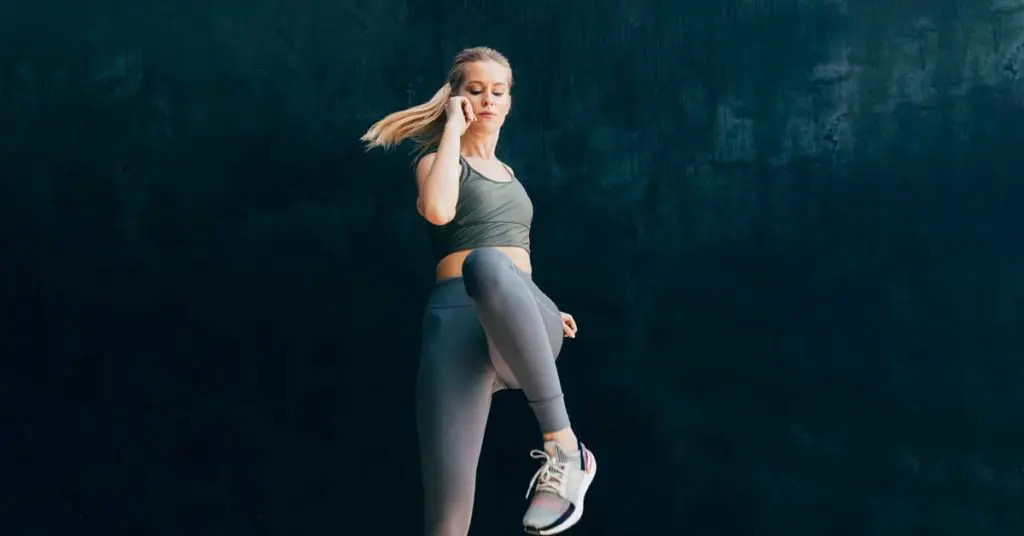
The best online fitness resource you'll ever need. We filter out the BS to ensure you meet your health and fitness goals!

The best online fitness resource you'll ever need. We filter out the BS to ensure you meet your health and fitness goals!

Knees to elbows are a group of abdominal exercises designed to really get into the rectus abdominis, though they stimulate the whole core (more on this below). They can be performed lying on the ground, sitting in a chair, or standing. Knee to elbow take very little equipment, and their more basic forms (lying or sitting) are incredibly accessible to all.
They are, basically, a form of crunch in which you raise your knees either as well as, or rather than, your torso, which can bring a far superior level of lower abdominal stimulus whilst keeping your lower back safer than crunches generally allow.
Beginners will generally benefit most from performing knees to elbows lying down, before progressing to standing variations, which require a far higher degree of proprioception and balance.
If you would struggle to lie down and/or perform knees to elbows standing, you may want to consider doing them from a seated position – this can be particularly beneficial for those with mobility issues.
They consist of a relatively simple movement pattern, though there are a few things you can do to maximize your gains and bring more muscle mass online through every rep.

To perform the knee to elbow from a prone position, grab a yoga mat or find a comfortable position on which to lie, and simply:

To perform the knee to elbow from a seated position, find a comfortable, well-supported chair, and simply:

To perform the knee to elbow from a standing position, find a comfortable stance with your feet at shoulder-width apart.
From here, simply:
There are a few key benefits we are looking for when knees to elbows. All of which will be elicited when they are performed with good form. Some of the main benefits include:
Knees to elbows help you to build up good core musculature. It works the rectus abdominis and hip flexors in tandem, with a little work through the obliques.
Of course, if you have low enough levels of body fat (around 10% or lower for men, slightly higher for women) this will bring about aesthetic benefits as your ‘six pack’ muscles are revealed.
There are also numerous health and fitness advantages to be gained from maintaining a strong core. It will reduce your risk of suffering from back pain and from sustaining an injury, especially through physical activity.
A strong core is also vital to athletic success in most disciplines. All athletic movements – well, all movements in general – are either initiated in the core or at least run through the core as power is transferred across the body. Strengthening your core will give you greater power generation and will also help to facilitate better force transference.
It will also allow you to maintain your body’s postural integrity for longer, as your core endurance and strength improves and holds you tight and upright.
Talking of which, maintaining a strong core can lead to improved posture…
A strong core will generally lead to improved posture. Your core muscles will act like a corset, keeping your body upright, balanced, and strong. It will then become far easier and more natural to maintain proper alignment through every joint, from your ankles to your knees, hips, and shoulders.
Improving your posture has a few benefits. Firstly, you will be taller, which is always nice. You will also likely feel more confident, as your chest and chin will naturally be raised.
Your shoulders are also naturally pulled back and down, and your overall bearing stronger, more open, and bolder. You will also be far less likely to suffer from back pain, or at least to high severity, and will stand a much decreased risk of injury and falling.
Your balance will improve with a strong core. This will be in large part down to the improved mind-muscle connection you build up throughout your torso as you regularly use, stimulate and develop the relevant muscle fiber.
This will give you greater control over your full body, aiding power generation and force transference, and giving you greater awareness of your midsection.
Standing knees to elbows will particularly work your proprioception – your awareness of your body in space. As your awareness develops through your midsection, and you are forced to balance on one leg whilst working your core, your balance and coordination will improve.
This will once again have athletic carryover, as you gain more control over your body. It will also have real-life benefits, as you will have a much lower risk of falling and/or injuring yourself with improved balance, proprioception, and stability.

There are few dramatic downsides to be found with the knee to elbow. You will be able to progress quickly from any level, beginning seated, then lying, then standing, overloading, and developing as you go.
However, the progressive overload will plateau at this point. There are few ways to make the standing knee to chest much harder or more stimulating. You can stand on an uneven surface like a Bosu ball, but this will have limited benefits over time.
Once you can perform 8-12 reps of standing knees to chest on each side, you will likely experience few, if any, advantages to keeping it in your regular routine. At this point, exercises like hanging knee or leg raises will represent a good progression.
If you don’t engage your legs in the exercise – generally whilst performing them from a lying position, keeping the feet on the ground throughout – then you will likely struggle to put as much of the effort into the abs as is desirable. You also risk hurting your lower back. These are both common problems with crunch variations.
Bringing your legs into play should negate these issues, but remain mindful of your lower back. Be sure to keep your core actively, consciously engaged throughout each and every rep.
You will use a fair few muscle groups in any knee to elbow variation. The stimulation and breadth of recruitment will increase as you run through progressively harder variations, with the most benefits to be gained from performing standing knees to elbows.
Each variation will represent a great core exercise, first and foremost.
Knees to elbows will recruit the rectus abdominis (the six-pack muscles), with some emphasis on the transverse abdominis (the deep core muscles) especially performed when lying down, with active, conscious core engagement. Hip flexors will also work hard as the knees are raised and lowered.
The twisting motion will stimulate the obliques, especially as you hold through a crunching motion at the top of each rep.
As above, you should avoid the lower back. Very little, if any, of the effort should be coming from here. Focus on the core, keeping it tight, keeping it active, and trying to keep any strain away from the spine. Open your collarbones, chest to the ceiling, and bring your shoulder blades together and downwards to maintain correct spinal alignment. This offsets much of this risk.